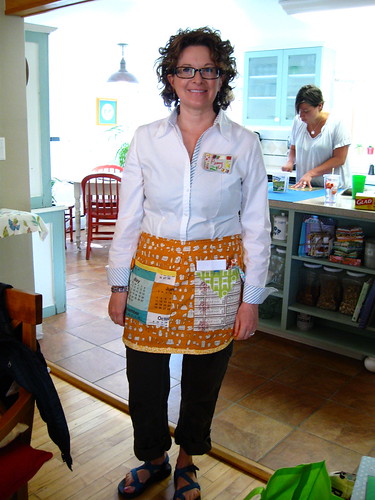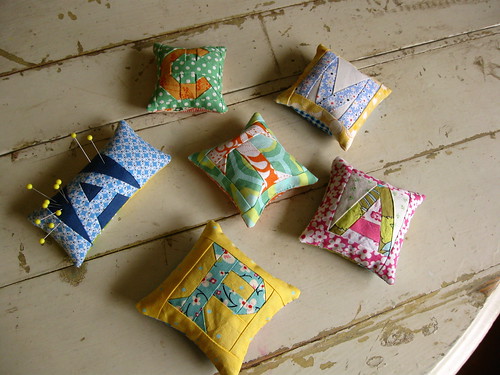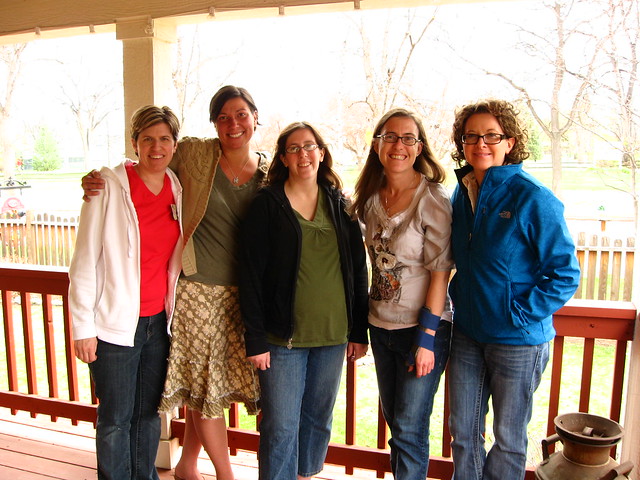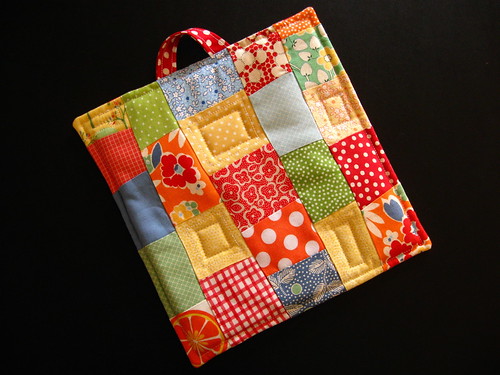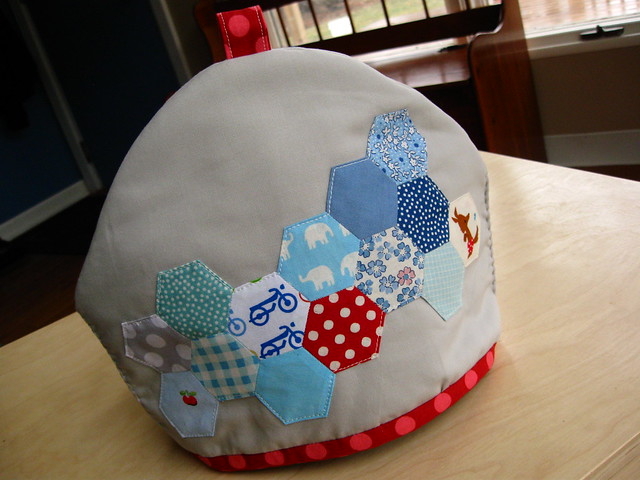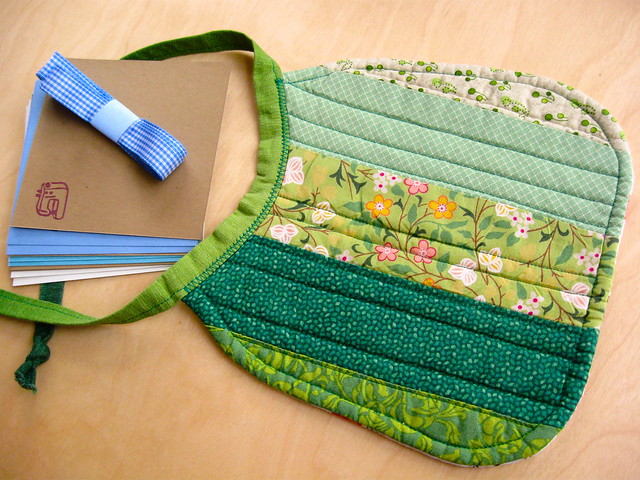I'm sure there are a ton of house block tutorials out there, but I'm looking for
** TINY ** houses for my bee quilt. Also, most of the wonderful ladies that are making blocks for me are new to quilting and haven't done any improv piecing. So, I'll try my hand at a tutorial. I do find it hard to describe improv piecing with
directions. By definition, improv is piecing in the moment, choosing fabrics that feel right next to each other and making mistakes and learning from them. Or, at least that is
my definition. :)
I want a tiny house block 4
1/2 " square, and I'm using the
green color scheme to represent my house in this quilt. I started first with the green seeds fabric on the bottom left and I cut it to 2"x3". Then I decided to put some of the big green dots in between the seeds fabric and the bandana fabric.
Sew them right side together on top of tear away foundation paper. Sewing such small pieces of fabric without foundation distorts their overall shape. The paper also helps secure the first stitch or two, so I don't get any thread tangles.
Press the seam open. Then audition how wide the big dot fabric should be before I sew the bandana fabric on.



Use a quilting ruler to cut the extra fabric off. First, fold the paper back. Then place the 1/4 seam dashed line where you want the seam, and then use the rotary cutter to trim the fabric that is past the edge of the ruler.
Fold the foundation paper back open. Sew a strip of background fabric (white) on the other side of the seed fabric.
Sew the bandana fabric on the right edge of the big dot fabric.
Press open. Then get out your ruler to determine where to cut the bandanda fabric to sew the background fabric (white) on.
I found that the background fabric needed to be 3/4" to 1" wide on either side to allow for a nice roof overhang.
Cut the house portion of the block to the final width of 4.5" and 3" high. The roof portion of the block will be 2" high when seam allowances are added in.


Audition roof fabrics:



I liked the pieced roof. Therefore, sew together two strips of fabric (on another piece of foundation paper).
Iron open, then trim that to 2" by 4.5". Cut two pieces of background (white) fabric to 3.25" square.
Align one white square with the top left corner of the roof fabric (pin this together if you aren't too lazy to pin, like I am). Make a pencil mark where the bottom left corner of the roof fabric is.
Using a small scrap of foundation paper (or a fabric scrap) sew a few stitches to anchor the thread. Leave the needle in the down position, lift the presser foot and
align your fabric with that pencil mark you made. Then lower your presser foot and sew a freehand angle from that pencil mark to the top of the roof.
Trim that seam allowance to 1/4".
Press the white fabric open.
Trim the extra white fabric off.
Lay the second white square on and make your pencil mark again. Sew it the same way with a scrap to secure the thread, pencil mark right at the needle, freehand angle to the rooftop.
Again, trim the seam allowance, press the fabric open and trim the excess fabric off.
Tear the foundation paper off of the roof portion. Lay the roof portion of the block on top of the house part of the block. (Pin if you want to.) Sew that seam. Tear off the last of the foundation paper and press open. Ta-dah!!
This is the block, 4 1/2" square. I'll have about eighteen of them in the quilt.
Here is the my inspiration gallery if you want other house shape ideas.
I can't wait to show off all of the house blocks as they come back to me from the bee.

